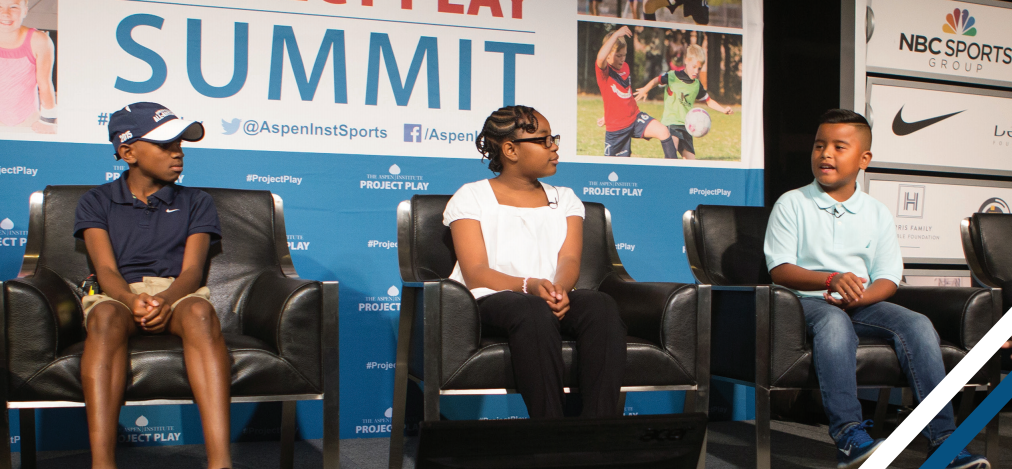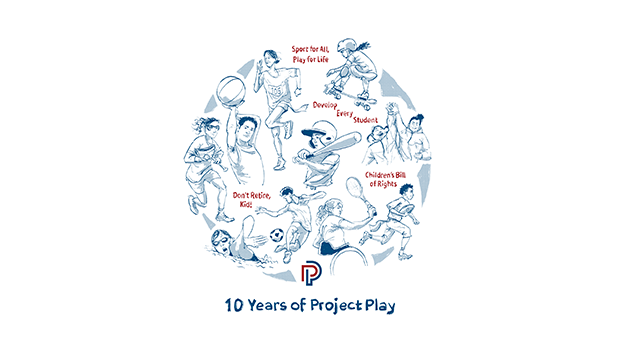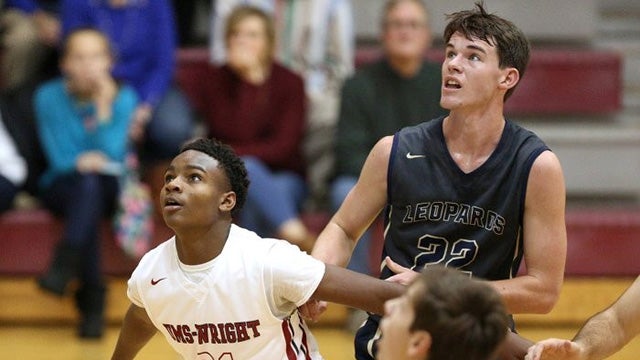America’s approach to the development of the youth athlete is broken.
As a leader in amateur sports, the NCAA is committed to supporting and promoting solutions to healthy, sustainable, long-term athlete development strategies in youth sports.
As the Aspen Institute notes, participation in sports by children and adolescents can provide a range of benefits that can last into adulthood. These benefits are not limited to the expected physical improvements that come with physical activity, but also include important emotional and social benefits that can translate into stronger social and leadership skills.
But for these benefits to be fully available to our youth athletes, the participation experience must be effective. One troubling trend is the increasing number of young people specializing in a single sport beginning at a young age, typically in their pre-puberty years.
One common myth that often leads to early sport specialization is the misconception that having a single sport to focus on will lead to opportunities to participate in elite levels of competition beyond the high school level. But this myth is not supported by the facts. Indeed, the vast majority of Olympic athletes played multiple sports as children. There are no data to support that early specialization leads to a greater likelihood of a college scholarship or a career as a professional athlete.
The unfortunate reality is early specialization is fraught with risks. For example, researchers are finding that early youth sport specialization is associated with increased rates of overuse injury, burnout, decreased motivation for sport participation and, eventually, complete withdrawal from sports.
Professional athletes, Olympic athletes, NCAA coaches, and countless medical experts have spoken out against the trend, but youth sport leagues and many parents still struggle to find the right balance for their respective young athletes.
The consequence of sport withdrawal is particularly concerning. According to the American Heart Association, about 1 in 3 American kids and teens is overweight or obese, with the prevalence of obesity in children more than tripling from 1971 to 2011. Stated another way, the United States has become one of the most physically illiterate countries in the developed world (physical literacy means having the ability, confidence and desire to be physically active for life). This is due, in part, to an increasing number of kids dropping out of sport during pre-pubescent years because of sport burnout.
What many youth sports leagues and parents may not realize is that multisport participation — not sport specialization — is the key to developing better long-term athletic performance while simultaneously increasing the potential for a lifetime of enjoyment of physical activity and recreational sports.
Ohio State football coach Urban Meyer and Clemson football coach Dabo Swinney both have been vocal about their preference in recruiting high school athletes who play multiple sports.
“I want the multisport guy,” Swinney told The New York Times. Data from professional sports underscore why Swinney, Meyer, and many other coaches prefer well-rounded athletes.
Early sport specialization has not been beneficial for high-caliber athletic performance at professional levels. The most recent NFL draft supports this concept.
In 2017, 30 of 32 NFL Draft first-round picks were multisport high school athletes, representing high school participation not only in football, but also track and field, baseball, basketball, and lacrosse.
The athletic success and advancement of multisport athletes is not limited to just professional sports. Among Olympic athletes, 7 in 10 report playing multiple sports growing up.
The NCAA is working in partnership with many organizations to help create a healthy, balanced culture in youth sports that supports the positive potential outcomes of sport participation, while strongly discouraging some of the more pervasive, negative elements of youth sport culture like single-sport specialization.
In 2015, the NCAA collected information from more than 21,000 current NCAA student-athletes at Divisions I, II, and III universities. According to the survey results, the sports with the highest percentage of students who had not specialized by age 12 were football, lacrosse, and track.
- 71 percent of Division I men’s FCS football players played other sports before college.
- 88 percent of Division I men and 83 percent of Division I women lacrosse players also played other sports.
- 87 percent of Division I female runners and 91 percent of Division I male runners played other sports before college.
Across all three divisions, the men’s sports in which athletes were most likely to specialize in their sport by age 12 were soccer (63 percent), ice hockey (59 percent), and tennis (45 percent). Among women’s sports, the highest rate of specialization occurred in gymnastics (88 percent), soccer (61 percent), and ice hockey (57 percent).
Nearly 50 percent of college athletes in baseball, football, and men’s soccer said that young athletes in their respective sport play in too many contests, and approximately 40 percent of football and men’s basketball players said they regret not trying more sports when they were young.
We recognize and acknowledge that there is substantial room for change and improvement within the NCAA model of recruiting as well.
Results from a recently released survey of more than 15,000 NCAA student-athletes show that although a strong majority of college athletes view their recruiting experience as positive, early recruitment is related to less positive feelings about the recruiting experience.
Additionally, young people who commit to a school before 11th grade are less likely to enroll there or to have known what they wanted to study at the time of commitment. Those who commit before 11th grade are also more likely to have had a coach leave before their enrollment and to experience a change in their scholarship offer.
Recruiting rules vary by sport, but the college lacrosse community is among those leading the way to address early recruitment via rules changes.
Last April, the Division I Council passed a rule — submitted jointly by the Intercollegiate Women’s Lacrosse Coaches Association and Intercollegiate Men’s Lacrosse Coaches Association — prohibiting college lacrosse coaches from communicating with prospective student-athletes until Sept. 1 of their junior year of high school.
Additionally, a Division I governance group is examining the issue of early recruitment for all sports. We all need to keep in mind that talent identification is quite unpredictable before age 17 — another reason to question the value of early recruitment.
The encouraging news is that some very good work already has been done, and many organizations are taking seriously ongoing steps to help encourage change where it’s needed. Specifically, the American Development Model is a targeted effort between the United States Olympic Committee and its national governing bodies of sport, including the NCAA, to apply long-term athlete development principles in a way that improves the culture of sport in the United States.
Importantly, the American Development Model emphasizes the importance of kids having fun in sport, while also participating in multiple sport activities before the age of 12. This approach allows young athletes not only to develop motor skills that transfer from sport to sport, but also to cultivate a passion for sport and an active lifestyle. The American Development Model brochure, which is free and available online, serves as a valuable resource for parents and coaches of young athletes, regardless of age, sport, or ability level.
The guidance provided by the American Development Model long has been supported by experts in the field, but the concerning results of recent research has amplified the importance of re-examining the way in which we approach youth sport participation in this country. We welcome the news that the Aspen Institute’s Project Play 2020 coalition of leading industry organizations and non-profits plans to make sport sampling and multisport play a year one priority.
Our expectation is that other NCAA sport communities will take a cue from lacrosse and work with the NCAA national office and its governance structure to re-examine early recruitment rules and practices. Similar rule changes in other sports may prove to be a key step in encouraging multisport participation at the high school level.
We strongly believe that athletics should be an integral part of youth development and society as whole, but it’s important that we do it properly. Kids need to be physically active, but they also need time to recover both physically and emotionally. And if they’re not having fun, they are less likely to be physically active for life.
Oliver Luck is NCAA executive vice president for regulatory affairs and strategic partnerships. Brian Hainline is NCAA senior vice president and chief medical officer.


